Αutio (goodbye) Greece
Othoni, Greece During the last five cruising seasons, Berkeley East has spent a huge amount of time in Greece. We...

Santorini, officially known as Thira, is what remains after a giant volcanic eruption that destroyed a single island and created the current geological caldera. Perhaps the most breathtaking of Greece’s Cyclades Islands, Thira is a crescent-moon landmass encircling the rim of the crater now filled with water. The huge lagoon measures roughly seven miles long, four miles wide, and is surrounded by steep cliffs on three sides, nearly 1,000-feet high. From a distance, the white villages clinging to the bluffs resemble snow-capped mountains.
The depth of the caldera, at 1,300 feet, makes it impossible for any but the largest ships to anchor anywhere in the protected bay. An amusing contrast to the deep anchorage is the fact that the only yacht marina in Santorini is actually too shallow to accommodate Berkeley East’s depth. These are the reasons why we never sailed BE to Santorini before.
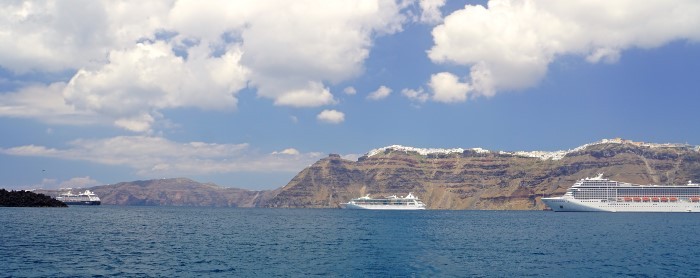
We also continually heard that Santorini was a place best experienced from the land. So we went by ferry last year (“Saving the best for almost last” blog, 6/15/2015), and had a fabulous week on the beautiful island. The views were stunning and, while we agree that it was truly extraordinary to spend time in a five-star hotel on the precipices overlooking this natural wonder, we couldn’t help but imagine sailing BE through the caldera below.

So, after much research, we found potential anchorages on Santorini’s southern beaches, and the possibility of taking a mooring on the edge of the bay. That was all it took for us to set sail to Santorini. When we arrived at the northern end of the caldera, we raised the sails on Berkeley East and proceeded to cruise around every part of the island from Oia, to Fira, past the outer islands and around the south end to Thira’s famous Red Beach.



Our self-guided tour was fantastic. But unfortunately, our planned anchorages had a three-foot swell rolling into them, the moorings were too close to shore, and the shallowest protected anchorage was over 200 feet deep. So it was back through the caldera in search of overnight shelter, which we found on a day-tripper mooring that was vacated after sunset until noon the next day.
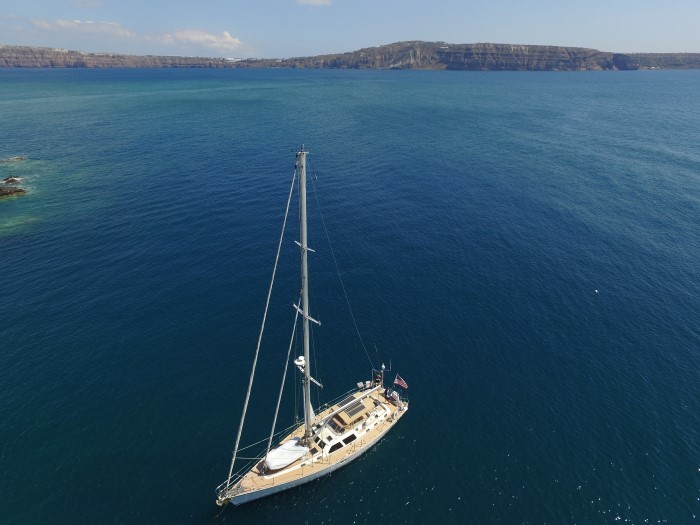
In addition to seeing this remarkable island from a different perspective, our time in Santorini provided us the perfect opportunity to learn about flying a drone (Larry’s birthday present) from a boat under sail in 10 – 15 knots of winds.
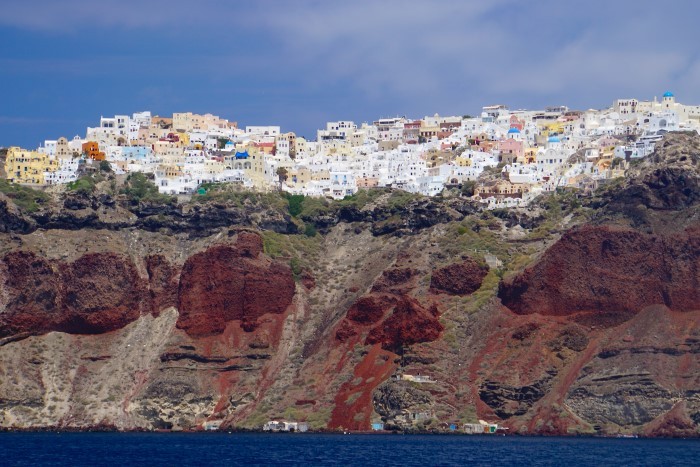
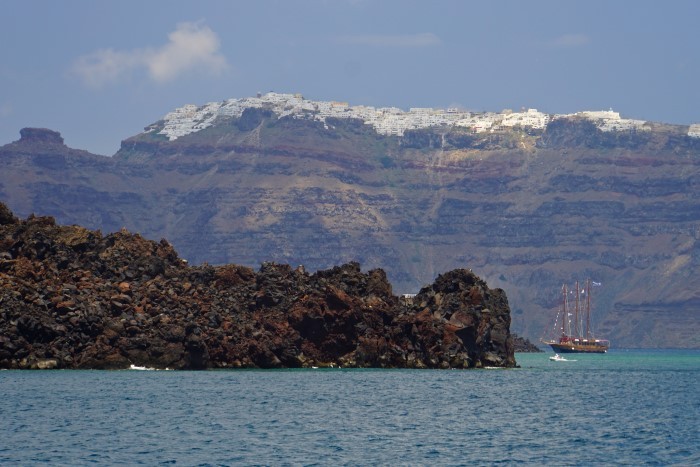
First, launching the drone from a moving sailboat is quite challenging, as there are masts and lines and poles in the way so you cannot simply set it on the deck and let it go. One person has to hold the drone steady until there is enough forward momentum and velocity to fly away quickly.
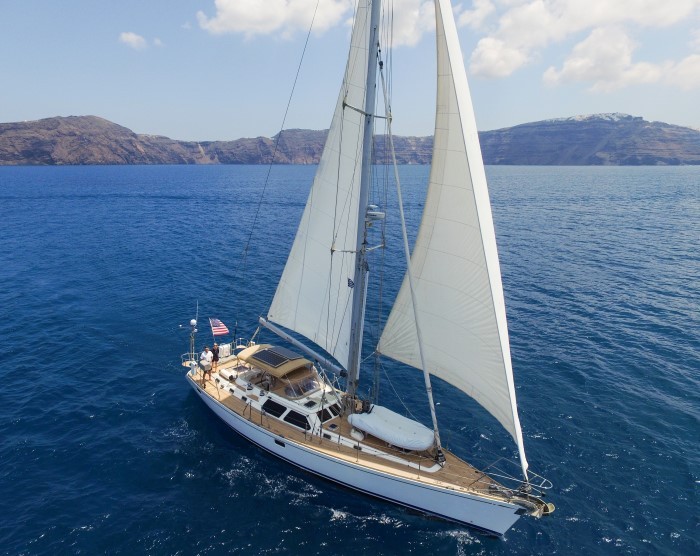
Landing is even trickier. Trying to match the speed of the boat while the drone moves around with the wind gusting is impossible. Once the drone is inside the boat’s rigging, any mistake could be catastrophic. We know this from experience when the wind increased the drone’s already rapid speed, sending it toward the lifelines. A skillful catch averted a disastrous crash landing.
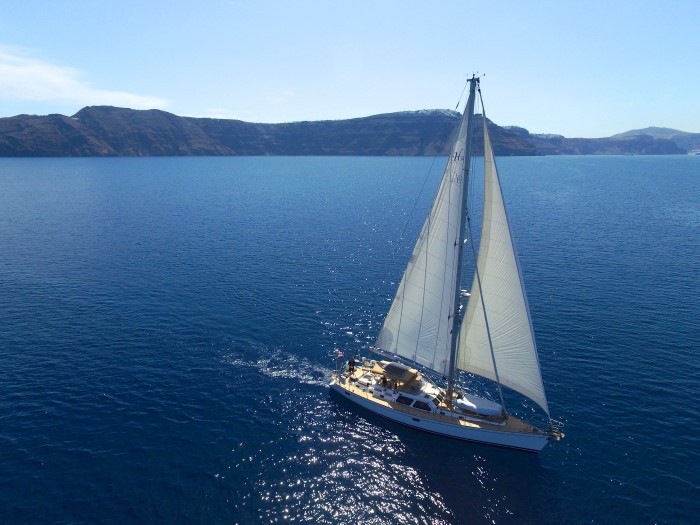
Since then, we have learned that the pilot (Larry) tries to fly the drone parallel to the boat while matching the boat’s speed, then moves the drone toward the boat (from the leeward side) so the flight crew (Mary) can grab the drone by the legs. This requires exact timing, as the flight crew (Mary) is also steering Berkeley East away from land and other boats, and has to leave the helm to chase the drone up and down the deck in order to catch it. We also discovered that landing against the wind allows any unexpected gusts to push the drone away from the boat, rather than into the rigging. So far the drone hasn’t collided into Berkeley East, and Mary still has all of her fingers.
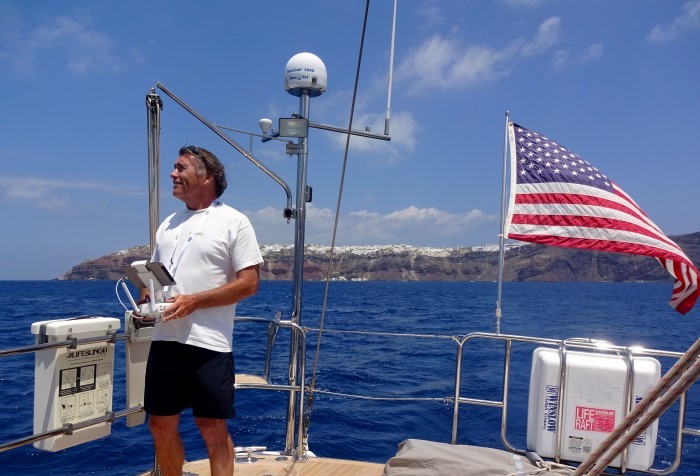
We couldn’t resist trying to take some drone videos while sailing in Santorini. Upon viewing the results, we learned several more lessons. Lesson One: Flying the drone by the boat, from stern to bow faster then we are sailing, makes it look like BE is sailing backwards. A nice trick but not what we were after. Lesson Two: It is easy to sail the boat into the drone when the drone gets in front of the boat, and behind the sails, where you can’t see it. Lesson Three: Videoing a moving target from a moving vehicle is a lot harder than it looks. The pilot/cameraman needs a lot more practice!
CLICK BELOW TO SEE OUR FIRST VIDEO OF BERKELEY EAST AT SAIL
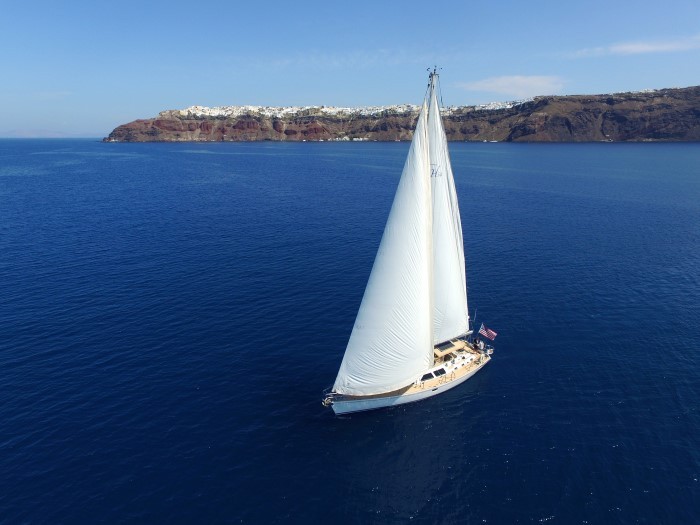
PREVIOUS COMMENTS
Great Video Larry and you singing and playing the Bouzouki I presume??
Drone (actually all) pics and video are amazing! Keep up the good work!